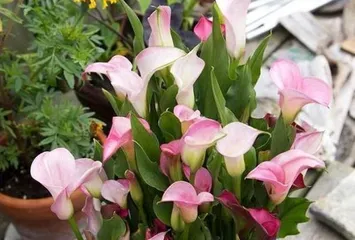Toxicity and Indoor Care Methods for Water Lilies

Water lilies are beautiful aquatic plants often used to decorate home gardens and ponds. However, many people are unaware that water lilies are toxic. This article will detail the toxicity of water lilies and how to safely care for them indoors.
Understanding the Toxic Components of Water Lilies
Water lilies contain various toxic components, such as ferulic acid, boletol, and flavonoids. These components have irritating and toxic effects. Ingestion or contact can cause human discomfort, and in severe cases, even lead to death.

The Effects of Water Lily Toxicity on the Human Body
The effects of water lily toxicity on the human body mainly manifest in the mouth, eyes, skin, and respiratory system. Ingestion can cause symptoms such as stomatitis, sore throat, and vomiting, while contact can lead to skin allergies, stinging, and redness.
How to Safely Care for Water Lilies Indoors
To avoid the harm caused by water lily toxicity, you can consider caring for it safely indoors. First, choose a suitable variety, preferably one with lower toxicity. Second, keep the environment clean by regularly cleaning the pond and changing the water.
Choosing a Suitable Variety
When selecting water lilies, pay attention to choosing varieties with lower toxicity, such as "Dragon Spew Pearl" and "Golden Lotus," and avoid varieties with high toxic components.

Keeping the Environment Clean
Water lilies need clear, flowing water to grow, but if the pond is not cleaned, bacteria and parasites can breed. The pond should be cleaned regularly and the water changed.
Increasing Light Intensity
Water lilies love light and can be placed on a balcony or windowsill. However, it should be noted that during the hot summer, direct sunlight should be avoided as it can damage the water lily.
Controlling Temperature and Humidity
Water lilies prefer a warm and humid environment, but excessively high temperatures and humidity can cause them to grow too fast, affecting the plant's health. The temperature and humidity of the environment should be controlled.
Fertilizing Appropriately
Water lilies need a moderate amount of nutrients to grow. You can apply organic fertilizer once a month. Do not over-fertilize, as it will affect the health of the plant.
Preventing and Controlling Pests and Diseases
Water lilies are susceptible to pests and diseases such as bacteria and aphids. Insecticides and fungicides should be applied in a timely manner to prevent the occurrence and spread of diseases.
Regular Pruning
Water lilies grow rapidly, and regular pruning can keep them healthy. When pruning, be careful not to damage the roots. It is best to use sharp tools.
Pay Attention to Sun Protection
In the hot summer, pay attention to avoiding direct sunlight. You can sprinkle a layer of moist plant ash around the flowerpot or cover it with a shading net.
Reasonable Arrangement of the Indoor Environment
When caring for water lilies indoors, arrange the flowerpot and surrounding environment reasonably. Do not crowd the plant, and ensure good air circulation.
Do Not Let Children Contact Water Lilies
Water lilies are highly toxic. Do not let children come into contact with or ingest them to avoid unnecessary harm.
Pay Attention to Safety Measures
When caring for water lilies, pay attention to safety measures such as wearing gloves and masks to avoid skin and respiratory contact with the plant's toxic components.
Water lilies are beautiful aquatic plants, but they contain various toxic components that can harm the human body. When caring for water lilies, pay attention to safety, choose low-toxicity varieties, and maintain environmental cleanliness and nutritional supplementation.